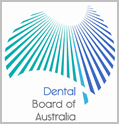
What is Gingivitis?
As dentists, we often talk to our patients about the importance of gum health. While many people are familiar with the term gum disease, they may not know its earliest and most common form: gingivitis.
Gingivitis is a mild form of gum disease that, if caught early, is completely reversible. Understanding what it is and how to spot it is the first step toward a healthier smile.
What Causes It?
The main culprit behind gingivitis is plaque, a sticky, colourless film of bacteria that constantly forms on your teeth. When you don’t remove plaque with regular brushing and flossing, it can harden into a substance called tartar. Plaque and tartar near the gum line irritate the gums, causing inflammation.
This inflammation is your body’s response to the bacteria. Over time, the gums become red, swollen, and can bleed easily, especially during brushing or flossing.
Common Signs and Symptoms
Gingivitis is often painless, which is why it’s easy to overlook. That’s why it’s so important to be aware of the subtle signs your gums may be sending you.
Look out for these common symptoms:
- Red or Swollen Gums: Healthy gums are typically a pale pink colour and firm. If you notice your gums look redder or puffy, it could be a sign of inflammation.
- Bleeding Gums: Healthy gums should not bleed when you brush or floss. Even a small amount of blood is a sign that something is not right.
- Tender Gums: Your gums might feel sore or sensitive to the touch.
- Bad Breath: The bacteria that cause gingivitis can also lead to persistent bad breath, which doesn’t go away even after brushing.
- Receding Gums: In more advanced cases, the gums may begin to pull away from the teeth, making them appear longer. Learn more about dental erosion.
The Problem with Leaving It Untreated
While gingivitis is a mild condition, ignoring it can have serious consequences. If the inflammation and infection are not addressed, gingivitis can progress to a more severe form of gum disease called periodontitis.
In periodontitis, the infection spreads to the deeper structures supporting your teeth, including the bone and ligaments. This can cause the bone to break down and the gums to recede further, forming pockets around the teeth. These pockets trap more bacteria, leading to a vicious cycle that can eventually cause teeth to loosen and even fall out.
The good news is that this progression is not inevitable. Gingivitis is fully reversible with good oral hygiene and professional care.
How to Prevent and Treat Gingivitis
The solution to gingivitis is simple and effective:
- Brush Twice Daily: Use a soft-bristled toothbrush and fluoride toothpaste to brush for two minutes, twice a day. Make sure you brush along the gum line where plaque builds up.
- Floss Daily: Flossing is crucial for removing plaque and food particles from between your teeth, where a toothbrush can’t reach.
- Regular Dental Check-ups: Visiting our team at Herald Avenue Dental Centre for a professional dental cleaning and examination is vital. We can remove plaque and tartar buildup that you can’t get rid of at home and provide personalised advice.
- Adopt a Healthy Diet: Limiting sugary foods and drinks can reduce the fuel for plaque-causing bacteria. See our tooth friendly diet recommendations.
Herald Avenue Dental Centre in Willetton
If you’ve noticed any of the signs of gingivitis, it’s not too late. The earlier you seek treatment, the easier it is to reverse the condition and protect your smile for the future. Don’t hesitate to contact us or book an appointment with our friendly team in Willetton to get your gums back to a healthy state.




